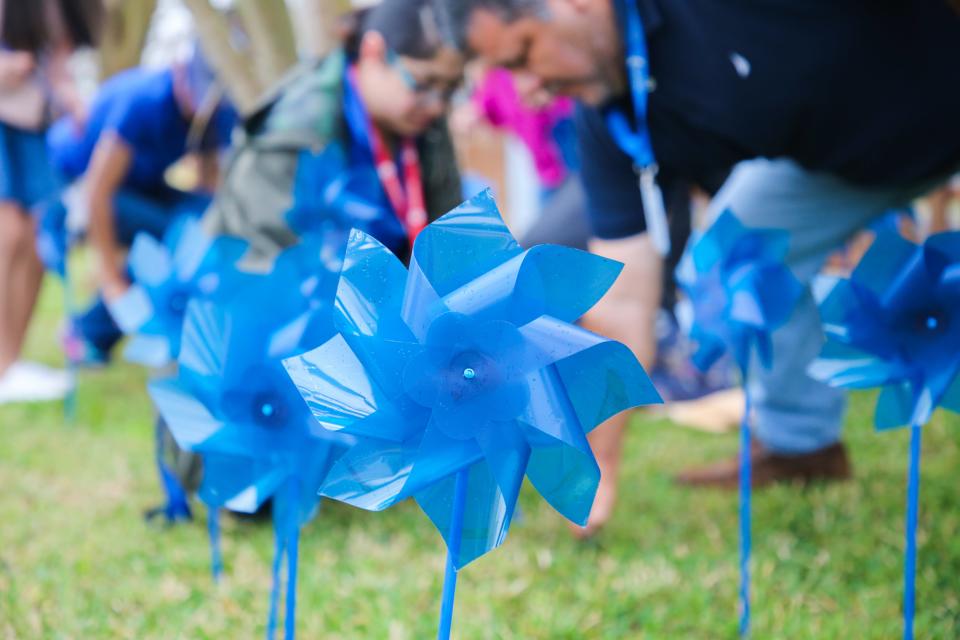‘Lead with empathy’: Destigmatizing child abuse in Hispanic households
As Child Abuse Prevention Month continues, attention shifts to safeguarding children nationwide. Amidst these efforts, the month serves as a reminder of the ongoing struggle to break down stigmas surrounding discussions of child abuse within Hispanic households.
Nearly 80% of Latino youth endure at least one traumatic childhood experience, such as abuse, neglect, household dysfunction or poverty, according to Salud America!, a national Latino-focused organization dedicated to inspiring healthy changes in policies, systems and environments for Latino families.
Signs of child abuse include unexplained injuries, bed-wetting, malnourishment, bad hygiene, overly sexualized behavior, risk-taking behaviors, and changes in eating, sleeping, school attendance, and mood.
“In a Hispanic household sometimes there is intergenerational trauma where, for example, the mom was abused by her father, and now he is also abusing the grandchildren,” said Ashley Arevalo, marketing and outreach specialist at Children's Advocacy Center of the Coastal Bend, which works with victims of sexual and physical abuse.
Dr. Kate Rodriguez, owner and clinical director of My Healing Center, said that most times, Hispanic households aren’t able to name abuse.
“Many people don't see things as abuse because it's the same thing that they've seen for so long. Like ‘My parents got whipped by a belt, that means it's okay,’” Dr. Rodriguez said as an example of generational trauma. “For so long, people took it as the norm because they didn't know anything else. They don't even acknowledge certain abuse as abuse.”
Statewide, Hispanic children generally experienced outcomes similar to or slightly better than white children in the child welfare system, according to the Department of Family and Protective Services. However, in most of the largest urban counties, Hispanic children were overrepresented compared to white children during the reporting, investigation and removal decisions, with particularly pronounced disparities observed in Travis County, where Hispanic children were 1.9 to 2.6 times more likely to be affected.

But many organizations believe that Hispanic households may hesitate to report instances of child abuse due to fear or shame. Vince Cortez, a Guardian Ad Litem volunteer at Court Appointed Special Advocates of the Coastal Bend, shared his experience with the first case involving a Hispanic family, where the mother’s boyfriend was accused of molesting her daughter.
“The mother was afraid of her boyfriend,” Cortez said. “She was afraid of saying the wrong things that would get him in trouble or anything to reflect that he was accused of molesting her daughter.”
This isn’t uncommon, as Arevalo said the idea of “machismo,” strong masculine pride, often causes the family to go along with whatever the man of the house says. Hispanic families may also face another unique challenge when it comes to reporting child abuse — immigration status, which may lead to staying silent about the situation.
“If someone in the household who provides financially for the family happens to be the one abusing the children, then there are times where the other parent doesn't want to believe it or turns a blind eye because they would not be able to survive financially if they left the child's abuser,” Arevalo said.
Dr. Rodriguez said cultural barriers can sometimes hinder conversations about child abuse in Hispanic households.
“In Hispanic culture, we've always been taught not to tell anybody our business. You keep that to yourself,” Dr. Rodriguez said. “So there's that kind of barrier of not wanting to tell anybody your family's secrets, you don't want them to know what's going on.”
However, she said learning how to express emotions at a young age, setting boundaries and learning how to ask for help are ways to break this cycle.
“There's a lot that we could teach kids simple things in school or at home. If parents were more educated on these things, we can prevent a lot of child abuse cycles from continuing,” Dr. Rodriguez said. “People need to be open (because) they need those resources.”
Children's Advocacy Center of the Coastal Bend offers case management, outreach, therapy, specialized forensic interviews, education and prevention services. Arevalo teaches a Body Safety presentation to kids as young as 3 and 4, and she said they easily grasp the concepts.
“Parents might think that the topic is inappropriate and they’re too young to understand but I disagree,” Arevalo said. “The previous person in my position has actually had a couple of kids go up to her afterwards and make an outcry of abuse because they realized it during the presentation.”
The organization is working to raise awareness, specifically by increasing the number of available resources in Spanish.
“As a community, we need to work on destigmatizing abuse and the only way that can happen is if we talk about it more openly,” Arevalo said. “I think we need to lead with empathy and understanding when it comes to this topic and there is a lot of shame and fear involved.”
By law, people are obligated by law to report suspected child abuse. If you suspect a child is in immediate danger, call 911. For all other cases in Texas, call the abuse and neglect hotline at 800.252.5400 or visit txabusehotline.org/
Visit https://www.coastalbendcac.org/ for resources in the Corpus Christi area
This article originally appeared on Corpus Christi Caller Times: Lead with empathy: Destigmatizing child abuse in Hispanic households

